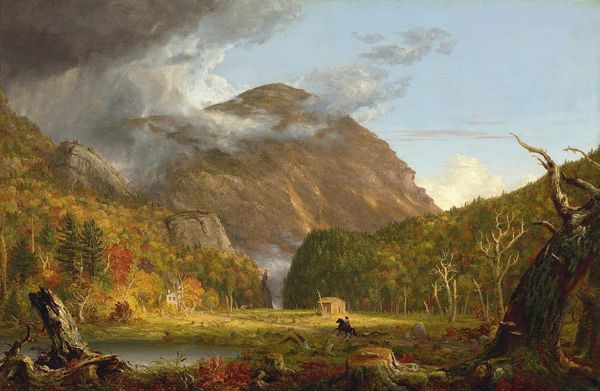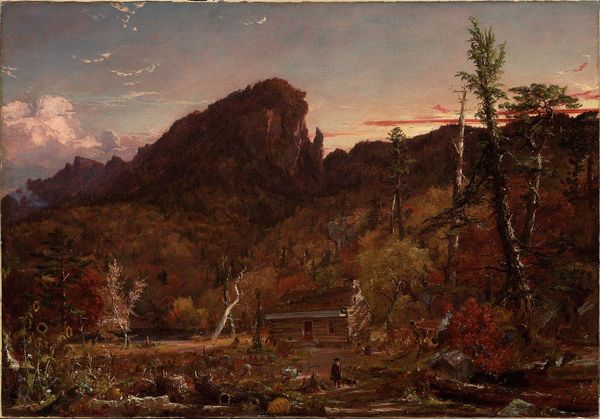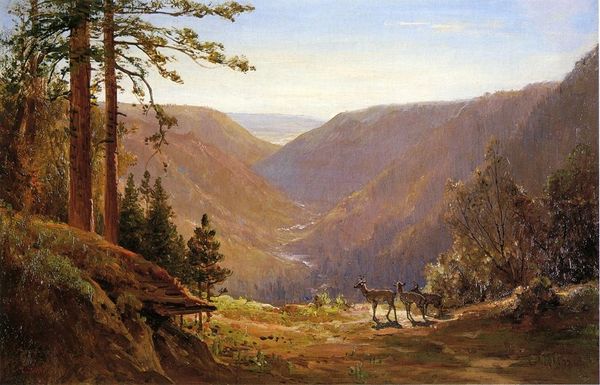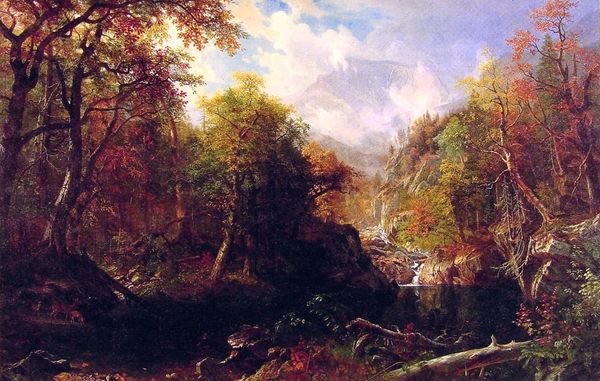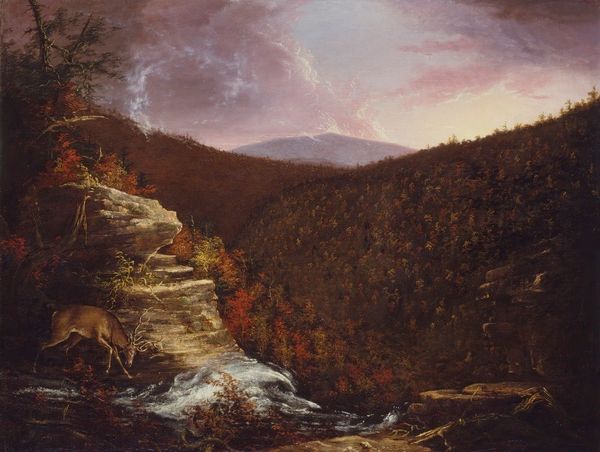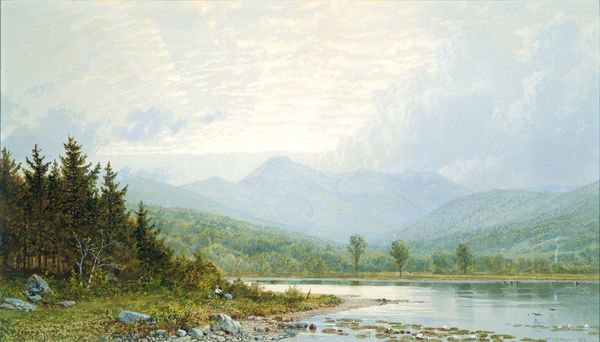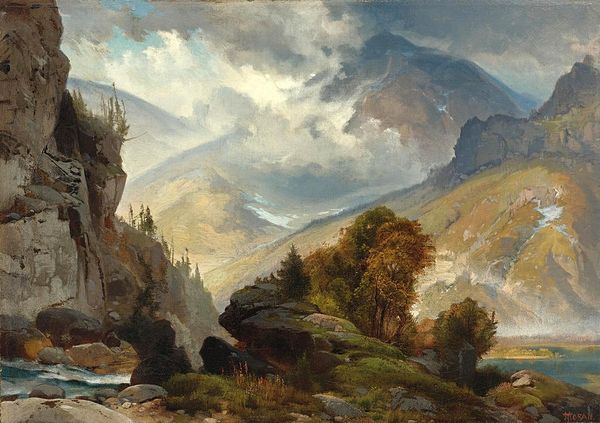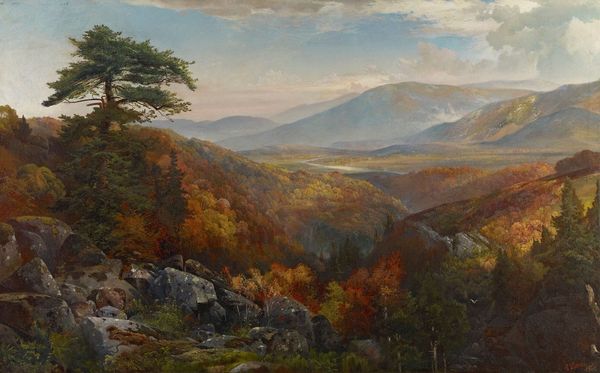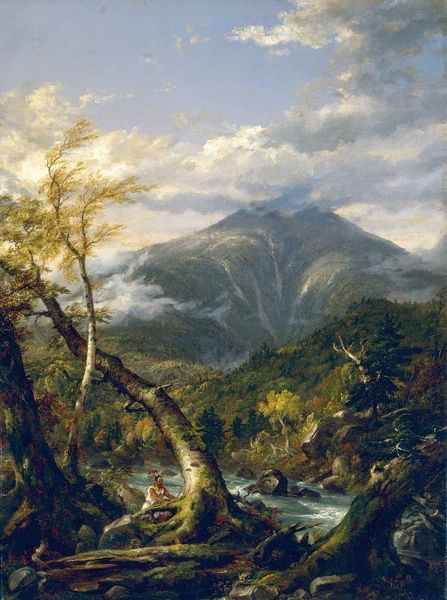
painting, oil-paint
#
sky
#
painting
#
oil-paint
#
landscape
#
mountain
#
hudson-river-school
#
nature
#
realism
Copyright: Public domain
Editor: We are looking at Thomas Hill's "Crawford Notch," created in 1872 using oil paint. The vastness of the landscape evokes a sense of the sublime. What is your take on it? Curator: It’s critical to consider this work within the context of American expansionism and Manifest Destiny. These Hudson River School paintings weren't just pretty pictures of untouched wilderness; they actively promoted the idea of the American landscape as a resource to be conquered and exploited. Editor: Conquered? I hadn't thought of it that way. Curator: Look at the small, almost imperceptible, details of human settlement – the road, the tiny house. These are visual cues legitimizing human dominance. What appears to be a celebration of nature also naturalizes a specific power dynamic. How do you see that reflected in contemporary conservation efforts? Editor: So you're saying this isn't just about admiring nature, but about control? That's intense! How did people back then react to it? Curator: For viewers in the 19th century, grappling with rapid industrialization, paintings like this presented a romanticized vision of the frontier, masking the brutal realities of westward expansion on Indigenous populations. Hill’s representation participated in erasure by depopulating these areas in his landscape paintings. Editor: Wow, I didn't expect such a complex perspective! It's given me a lot to think about. Curator: Exactly, art holds many perspectives, especially regarding the complicated politics involved with our land.
Comments
No comments
Be the first to comment and join the conversation on the ultimate creative platform.
